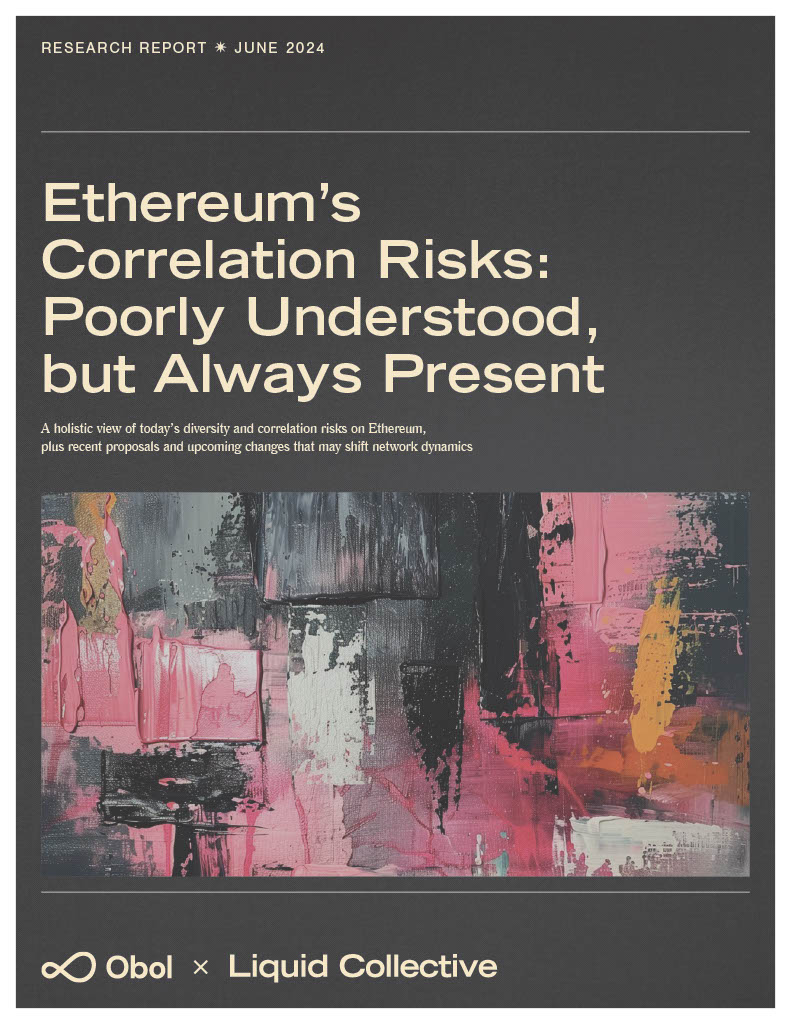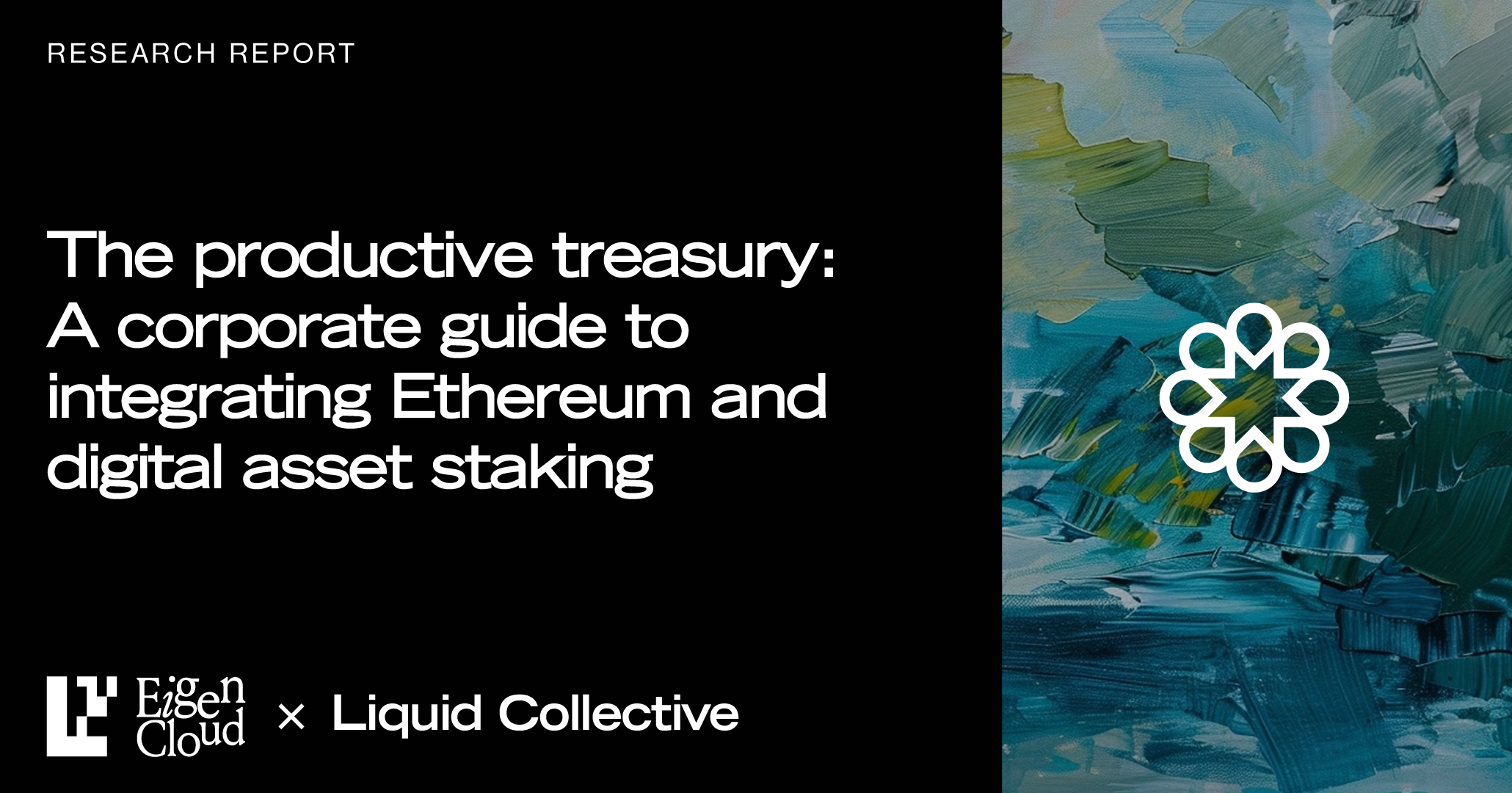Jun 06 2024
The correlation risks related to ETH staking remain broadly misunderstood, though correlation represents a critical hot-topic for researchers and key consideration for stakers. Understanding and mitigating correlation risks is crucial for maintaining the network's security, resilience, and decentralization.
A collaboration between Obol Labs and Liquid Collective, the report “Ethereum’s Correlation Risks: Poorly Understood, but Always Present” examines a holistic cross-section of today’s staking correlation risks, key mitigations, and how these dynamics may shift tomorrow.
Obol Labs x Liquid Collective: Ethereum’s Correlation Risks
Explore the critical aspects of correlation risk factors in ETH staking, including client, operator, and geographic diversity, along with mitigation strategies to enhance network security and resilience, in our report.
View ReportThe report provides insights to support informed decision-making within a diverse staking ecosystem, including an exploration of:
- Correlation penalties: Ethereum’s slashing penalties increase if a significant portion of the network acts harmfully. For instance, if 33.4% of the network’s stake is slashed, 100% of funds on a slashed validator can be lost, making understanding these risks crucial.
- Client diversity risks: A bug in a popular client like Geth, used by 84% of the network, could cause major disruptions. Diverse client usage helps prevent such single points of failure.
- Operator diversity risks: Staking with a single, large operator increases risk. Historical examples from across the PoS ecosystem underscore the importance of distributing stake.
- Geographic and cloud risks: Regional outages and policy changes highlight the need for geographic and cloud diversity to maintain network resilience.
- Research & upcoming proposals: Upcoming changes to Ethereum, like EIP-7251, and topical ecosystem research, such as how correlation penalties could be refined, may impact correlation risks and network dynamics.
Learn more in the full report here.





